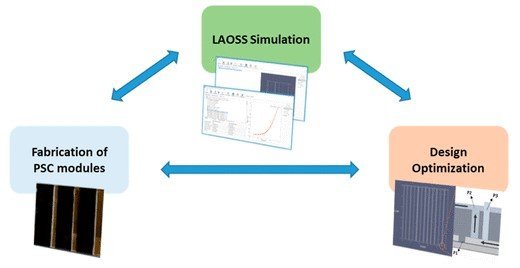Perovskite Solar Modules: Design Optimization
Diogo Castro, Vera C. M. Duarte, and Luísa Andrade
ACS Omega Article ASAP
The increasing demand for solar energy has led researchers worldwide to develop new photovoltaic technologies.
Among these, perovskite materials are one of the most promising candidates, with a performance evolution unparalleled in the photovoltaic field.
However, this thin-film technology is not yet available at a commercial level, mainly due to upscaling issues. This work studied the best design options for upscaling single cells into modules by minimizing electrical losses in the device substrates.
Fluxim`s Laoss software for upscaling was used to test and optimize different substrate sizes and designs and to predict several performance outcomes from experimentally fabricated single cells.
The results showed that it is possible to retain most of the energy production when upscaling from a single cell to a module if the appropriate design for an efficient monolithic device is used.

